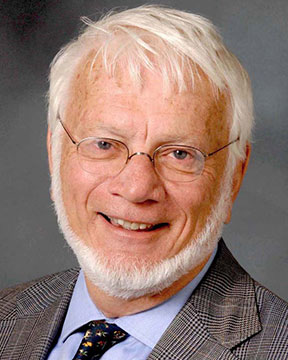ORALS
SESSION: SISAMMonAM-R5
SPD Nanomaterials | Zehetbauer International Symposium on Science of Intelligent and Sustainable Advanced Materials (4th Intl. Symp. on Science of Intelligent and Sustainable Advanced Materials (SISAM)) |
| Mon Nov, 5 2018 / Room: Copacabana A (150/1st) | |
| Session Chairs: Ruslan Valiev; Werner Skrotzki; Session Monitor: TBA |
12:10: [SISAMMonAM03] Invited
Effect of Texture on Shear Banding in ECAP Werner
Skrotzki1 ;
Laszlo
Toth2 ; Laura
Lienshoeft
1 ; Julius
Huhn
1 ; Philipp
Frint
3 ; Martin Franz-xaver
Wagner
3 ;
1Dresden University of Technology, Dresden, Germany;
2Lorraine University, Metz, France;
3Chemnitz University of Technology, Chemnitz, Germany;
Paper Id: 270
[Abstract] Samples taken from a room temperature (RT) extruded aluminium alloy 6060 were deformed by equal-channel angular pressing (ECAP, one pass, RT) [1]. Texture measurements by X-ray diffraction reveal a strong predominant <111> fibre texture in the extruded bar. Depending on the alignment of the fibre axis with respect to the ECAP die, strain localization phenomena in form of shear bands are observed. Local texture measurements by electron backscatter diffraction after ECAP reveal a clear shear texture with certain components dominating. The shear texture is related to the starting texture, which determines the slip system activity. Thus, there is a clear correlation between starting texture and shear banding during ECAP. Texture simulations reproducing the experimental texture show that the Taylor factor is constantly decreasing when shear banding takes place while in the case of homogeneous shear it goes over a maximum. This clearly indicates that geometrical softening leads to the mechanical instabilities.
References:
[1] P. Frint, PhD Thesis, Chemnitz University of Technology (2015)
SESSION: SISAMTuePM2-R5
Computational Simulation of ISAM | Zehetbauer International Symposium on Science of Intelligent and Sustainable Advanced Materials (4th Intl. Symp. on Science of Intelligent and Sustainable Advanced Materials (SISAM)) |
| Tue Nov, 6 2018 / Room: Copacabana A (150/1st) | |
| Session Chairs: Laszlo Toth; Adelia Aquino; Session Monitor: TBA |
16:45: [SISAMTuePM211] Invited
Insights in the Variations of Deformation Mechanisms in Polycrystals With the Help of Texture Modeling from Macro to Nano Grain Sizes Laszlo
Toth1 ;
1Lorraine University, Metz, France;
Paper Id: 308
[Abstract] It is shown in this work that the crystallographic texture can be efficiently used for getting insight into the deformation mechanisms that take place during plastic deformation. The technique is based on the modelling of the 4D nature of the orientation distribution function (ODF) of the grains (3D) which evolves with strain (1D plus). The changes in the texture are more enhanced when the deformation is extremely high, which can be imparted to the material using the various recent severe plastic deformation (SPD) processes. The most relevant effect in SPD is the grain fragmentation process, which has a strong effect on the grain size and shape. By SPD of alloyed metals nano-range grain sizes can be reached (down to 30 nm) by enhancing in this way the role of the grain boundaries (SPD is a top --> bottom process). Alternatively, nano-polycrystals can be constructed using bottom --> up techniques with even smaller grain sizes (by electro-deposition or powder metallurgy). When such materials are deformed, unusual textures develop. It is shown in this work by polycrystal modelling of the texture evolution that the effect of the existence of the large grain boundary surfaces is a change in the operating slip systems when grains are ultra fine (below 500 nm) or nano-sized (below 100 nm). The main effects are: partial slip, nano-twin formation, grain boundary sliding and migration. The overall behaviour of the polycrystal is also changing; initially, when grain size is still large, heterogeneous deformation from grain-to-grain is valid - which requires the use of a self consistent polycrystal model - while for nano grain sizes the polycrystal approaches more the uniform Taylor polycrystal behaviour. The consequence of the Taylor behaviour is a large reduction in the density of geometrically necessary dislocations which is confirmed by EBSD measurements.
References:
[1] Shear-Coupled Grain Growth and Texture Development in a Nanocrystalline Ni-Fe Alloy during Cold Rolling, L. Li, T. Ungar, L. S. Toth, W. Skrotzki, Metallurgical Transactions, 47 (2016) 6632-6644, DOI 10.1007/s11661-016-3753-7.\n[2] Geometrically necessary dislocations favor the Taylor uniform deformation mode in ultra-fine-grained polycrystals, L.S. Toth, C.F. Gu, B. Beausir, J.J. Fundenberger, M. Hoffman, Acta Materialia, 117 (2016) 35-42. \n[3] Grain size dependent texture evolution in severely rolled pure copper, Materials Characterization, C. F. Gu, M. Hoffman, L.S. Toth, Y.D. Zhang, Materials Characterization, 101 (2015) 180-188.
[4] Nano-enabled orientation alignment via extreme shear strains, Irene Beyerlein, John S Carpenter, Abigail Hunter, Laszlo S Toth, Werner Skrotzki, Scripta Materialia Scripta Materialia, 98 (2015) 52-55.\n[5] Unexpected brass-type texture in rolling of ultrafine-grained copper, Scripta Materialia, C.F. Gu, L.S. Toth, Y.D. Zhang, M. Hoffman, Scripta Materialia, 92 (2014) 51-54. \n[6] New experimental insight into the mechanisms of nanoplasticity, Werner Skrotzki, Andy Eschke, Bertalan Joni, Tamas Ungar, Laszlo S. Toth et al., Acta Materialia, 61 (2013) 7271-7284.



















